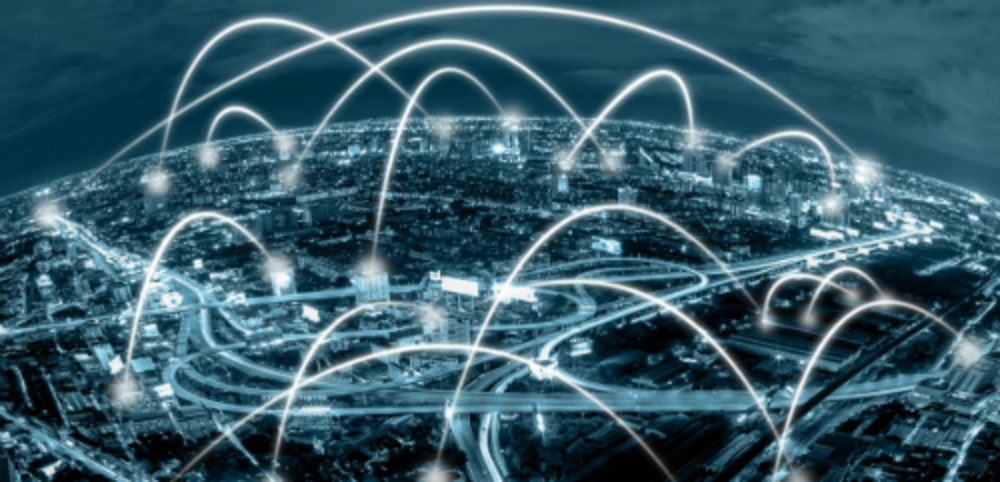Today, firms, including GM, Ford, Google, and some solar energy producers, announced that they would cooperate in developing guidelines for expanding the use of virtual power plants (VPPs). They are technologies for reducing the load on electrical grids during times of shortage.
The energy transition organization RMI will lead the venture, the Virtual Power Plant Partnership (VP3), which also aims to influence legislation for supporting the use of the technologies, the firms announced.
Software to respond to electricity shortages
Thousands of dispersed energy sources, such as electric heaters and electric vehicles, are combined into virtual power plants.
With the consent of the customers, they employ cutting-edge software to respond to electricity shortages using strategies such as instructing electricity-using appliances like water heaters to reduce their consumption or switching the batteries in EVs and thousands of household batteries from charge to discharge mode.
The explosive expansion of virtual power plants enabled by the IRA
In the United States, where the 2021 Inflation Reduction Act has expanded or added tax incentives for electric vehicles, water heaters, solar panels, and other equipment, whose output and consumption are coordination acceptable. The aim is to reduce grid demand. IRA poised VPPs for explosive expansion.
According to RMI, VPPs could cut U.S. peak demand by more than 200 GW by 2050 and by 60 GW by 2030, which is equal to the average family use of 50 million people.
According to Mark Dyson, managing director of the carbon-free electricity program at RMI, virtual power plants will allow grid planners and grid operators to (better manage) growing electricity demand from vehicles, buildings, and industry while also ensuring that the grid can remain dependable even in the face of ongoing extreme weather challenges and aging physical infrastructure.
VPPs’ experience by now
VP3 will be able to demonstrate that EVs can be a dependable asset to the retail utility and or the retail transmission operator as well as an asset to a homeowner and to fleet customers, according to Rob Threlkeld, director of the global energy strategy at General Motors.
In several U.S. states as well as in nations like Australia and Germany, VPPs have already increased grid resilience.
Last August, when temperatures reached record highs, the wholesale market operator California Independent System Operator dispatched power using all available resources, including VPPs, to prevent blackouts. Smart thermostats from Google Nest helped to lighten the load.
According to Parag Chokshi, head of Google’s Nest Renew, this will become increasingly necessary to maintain the grid’s resiliency, prevent blackouts, and enable the grid to become cleaner and greener.
SunPower, Sunrun, Ford, and other founding members of VP3 are also in the combination.
How do virtual power plants work?
A virtual power plant (VPP) is a network of distributed energy resources (DERs) that are connected and controlled remotely to act as a single, centralized power plant. This allows for the coordinated and efficient management of multiple DERs, such as solar panels, wind turbines, and energy storage systems, to generate and distribute electricity to the grid.
The first step in creating a VPP is to identify and connect various DERs within a defined geographic area. Different entities, such as utility companies, businesses, and individual homeowners, may be owners of these DERs. Once connected, a central control system is used to manage and optimize the output of the DERs in real-time, based on weather forecasts, grid conditions, and energy demand.
One key aspect of VPPs is the ability to use advanced algorithms to predict and respond to changes in energy demand, allowing the VPP to quickly adjust the output of DERs to maintain a stable supply of electricity to the grid. This can help to reduce the need for traditional power plants to ramp up or down to meet changes in demand, which can be more expensive and less efficient.
Another important aspect of VPPs is their ability to provide a range of grid services, such as frequency regulation, voltage control, and black start capability. These services help to maintain the stability and reliability of the electric grid.
In summary, Virtual Power Plant is a network of multiple renewable energy resources such as solar, wind, energy storage systems, etc, connected and controlled remotely to act as a centralized power plant. This allows the efficient management of energy and provides grid services, with more flexibility and stability in energy supply.

